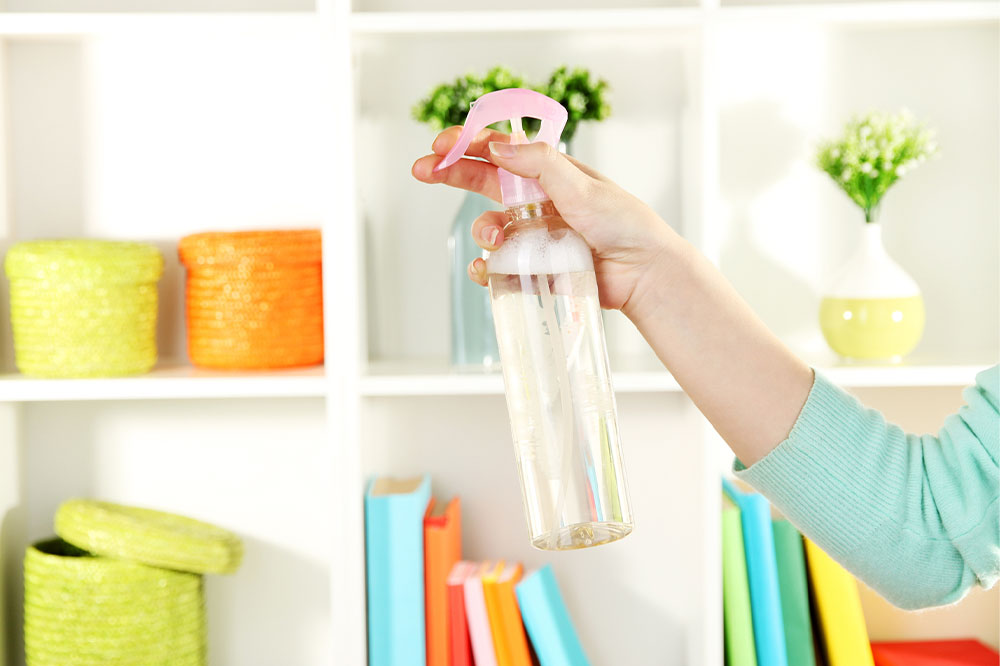9 household products that may harm the lungs

Stocking household essentials is a routine part of most homeowners’ weekly plans. While these items are indispensable to an optimally functioning household, not understanding their potentially harmful effects can cause several health hazards, including pulmonary issues. While buying household products, it is important to understand each product’s constituents and safe consumption practices to prevent them from causing health problems. This article lists household products that may be potentially harmful to one’s lungs if not used right:
Household products potentially harmful to the lungs
Hand sanitizer
Hand sanitizers are highly effective in ensuring clean hands and destroying bacteria and germs, which may cause infections if ingested. However, sanitizers comprise several chemicals, including benzalkonium and methanol, and inhaling these chemicals can cause a host of health hazards, such as lightheadedness, nausea, vomiting, loss of smell, chemical burns in the nasal cavity, and worsening of existing respiratory issues.
Bleach spray
Bleach spray serves a wide range of household functions, from eliminating mold and mildew from surfaces and fabrics to disinfecting surfaces and removing stains. However, bleach is a harmful chemical that can cause several health problems if not used properly. It is particularly known for increasing susceptibility to chronic obstructive pulmonary disease (COPD) caused by blockage of airflow to the lungs. Studies have shown that bleach spray can increase one’s risk of COPD by 32%. Misuse of the product can also lead to lung and breathing conditions like asthma and damage one’s respiratory tract.
Toilet paper
This indispensable household product contains several toxic chemicals, such as furans and dioxin, which can trigger or worsen pulmonary conditions. For example, dioxin is proven to cause pulmonary deficiencies, including lung and breathing problems, and other health issues like skin lesions and headaches. Today, many individuals are swapping toilet paper with adult wet wipes, 100% bamboo paper, bidets, and other safer alternatives.
Air fresheners
Although highly effective in eliminating unpleasant odors and releasing fragrances in one’s room, air fresheners can cause severe toxicity and harm the body in several ways. Studies have shown that the brief inhalation of air freshener sprays can cause lethal breathing problems like coughing, difficulty breathing and choking. Its constituents, like ethanol and glycol ethers, can irritate the nasal passage when inhaled. Moreover, propellants like hydrocarbons can cause abnormal palpitation rates.
Detergents and dishwashing liquids
Although dishwashing liquids and soap products are necessary household supplies, they can cause throat swelling and breathing difficulties if the fumes they release are inhaled. On the bright side, several hypoallergenic detergent solutions are available to ensure consumer safety. It is best to read the list of chemicals added to dishwasher liquids and detergents before buying them.
Disinfecting wipes
Most disinfecting wipes contain bleach and other agents to destroy bacteria and germs. Moreover, they include fragrances to eliminate the smell of chemicals. Research has shown that exposure to these chemicals over time can cause lung diseases and is particularly unsafe for persons with asthma, allergies, and other breathing and lung conditions.
Paper towels
Paper towels contain chlorine and formaldehyde, giving rise to toxins like furans and dioxins, which can cause several breathing and lung disorders. It is best to replace paper towels with reusable cloth towels to ensure safety while not compromising hygiene.
Hand soaps
Hand soaps contain a chemical known as sodium laureth sulfate, which is commonly used as an emulsifier in these products. While sodium laureth sulfate facilitates sudsing and foaming in hand soaps, it can cause several health hazards, including irritation of the lungs, eyes, and skin. Moreover, many popular hand soaps contain fragrances, which can trigger or aggravate breathing problems. It is best to avoid hand soaps with fragrances, opting for chemical-free alternatives made of natural ingredients.
Plastic trash bags
Plastic trash bags, which are essential to ensure a clean and tidy environment, typically release harmful chemicals, such as phthalates and dioxins, triggering and contributing to several respiratory conditions. Further, these products contain lead and cadmium in high concentrations. Lead exposure is linked to lung disorders like COPD. With increasing awareness of the harmful effects of such toxins, safe and non-toxic trash bags have been introduced in the market.
Tips for buying safe products
Choose products free of harmful chemicals
Some common harmful chemicals in household products include lead, cadmium, dioxin, and furans, which can cause serious respiratory conditions. Hence, it is important to check out the constituents of household products and opt for the ones that contain minimal or no chemicals.
Avoid products with fragrances
Products containing fragrances may smell inviting, but they can lead to respiratory problems and harm the lungs. It helps to purchase pure products without fragrances while buying soaps, detergents, and dishwashing solutions.
Look for products free of VOCs
Volatile organic compounds, or VOCs, are included in several household products, including paints, paint strippers, hobby supplies, stored fuels, and aerosol sprays. It has been found that VOCs tend to irritate the throat and can cause difficulty breathing. It is important to avoid products containing VOCs, opting for organic options without such compounds.
Look for healthier alternatives
Sometimes, certain regularly used household products may be safer than others. For example, microfiber cloths and fabric hand towels are safer for the environment than paper towels. Bidets are safer for one’s health and the environment compared to toilet paper. Thus, it is good to look for alternatives to reduce the harmful effects of household products.
Check out products by sustainable brands
Sustainable products typically contain ingredients that are healthier and safer compared to regular products. It helps to research sustainable products and brands and the constituents of such products. These products can help ensure a better world around us and prevent lung conditions.
When cleaning the house, consider using natural and affordable cleaning products like baking soda, vinegar, and lemon juice. Swap out the usual cleaning supplies with these natural alternatives to decrease the amount of toxins in the home.









